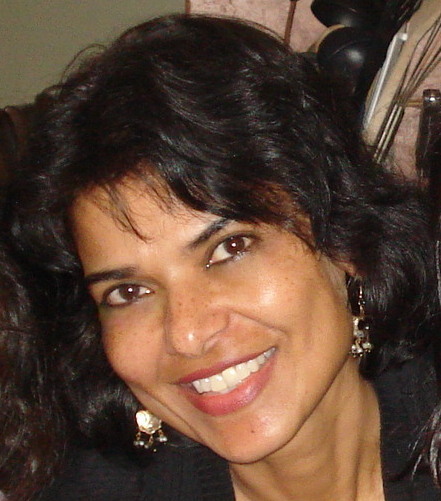Creative Peaceful Resistance
By Bob Cunningham
Dr. Lorna Gonsalves has lived in the United States for more than 40 years, but she still holds a special place in her heart for her birthplace, Mangalore, India.
 Gonsalves, who earned her doctorate in social psychology from Bowling Green State University, recently spent six weeks as a Fulbright specialist at the School of Social Work Roshni Nilaya in Mangalore utilizing her signature Creative Peaceful Resistance (CPR) approach to help initiate participatory education, equal justice and social transformation.
Gonsalves, who earned her doctorate in social psychology from Bowling Green State University, recently spent six weeks as a Fulbright specialist at the School of Social Work Roshni Nilaya in Mangalore utilizing her signature Creative Peaceful Resistance (CPR) approach to help initiate participatory education, equal justice and social transformation.
“My recent Fulbright assignment in India was very well received by my host institution,” Gonsalves said. “This made it a fertile seed-bed for cultivating a critical service learning project using the Creative Peaceful Resistance approach. We focused our work on the needs and visions of local domestic workers, a group that is marginalized and exploited in all parts of India.”
During her assignment, Gonsalves engaged students in critical discussions and worked with local domestic workers and artists. They built a reflection park and students put on a dramatic “call to action.” She said the work in her hometown was challenging, inspiring and rewarding.
“Having been born in Mangalore and having lived in four of the major cities in India, I was aware of the problems that domestic workers face,” she said. “I was grateful for the opportunity to work with students to learn from domestic workers and take their visions to the general public in the form of a stunning mural.
“We also coordinated the construction of a reflection park intended to house the mural as well as future murals representing the visions of various marginalized groups in Mangalore.”
Unifying myriad workers' views on social and political change in order to create distinct and purposeful larger-than-life murals can be daunting, but Gonsalves has perfected her method through years of hard work, study and research as a consultant and workshop facilitator for 25 years
“I worked with four local artists from the ISIRI group,” she said. “During orientation sessions, I briefed the artists about the goals and objectives of the project. They participated in listening and learning sessions with domestic workers and created individual sketches to reflect the issues raised. I then worked with them to consolidate the ideas expressed by domestic workers to create the final mural. This final mural was then shared with some of the domestic workers to ensure that it was an accurate representation.
“Serving as social messengers is not an easy task for artists and as they, themselves expressed, they learned a great deal about themselves and the issues they were bringing to life through this project.”
The CPR approach came about through more than a decade’s work with Toledo youth.
“The ideas emerged from listening and learning sessions with over 500 youth—mostly in Toledo’s urban areas,” said Gonsalves, who founded Human Values For Transformative Action in Maumee, Ohio, a Toledo suburb. “These sessions brought me face-to-face with remarkable young people who laid bare their outrage, helplessness, and anguish—raw wounds that needed urgent attention.”
Gonsalves said it became clear that youth needed a channel for protesting the injustices that they faced and sharing their brilliance and creativity with the public. Through CPR, she said, translating the their visions into full-color murals provided an opportunity for youth to make policymakers aware of the plight of their communities, instigating collective introspection and action. The transformative power of creative peaceful resistance is generated from both the content and process of the work.
“Many of the youth who inform the murals and present them to the public have never engaged in thinking or talking about neighborhood transformation,” Gonsalves said.
“These conversations provide youth with channels for venting frustrations and envisioning change. The very act of participating in such a project often changes their perceptions of themselves and their capacity to make positive contributions. From viewing themselves as being ‘problems’ and ‘at risk,’ they come to view themselves as ‘leaders’ and “agents of change.’”
While these youngsters appreciate traditional programs that prepare them to pass exams, obtain jobs, and stay out of trouble, they also express the urgent need for grassroots initiatives through which they can gather together to share stories, speak about their pain, discuss their dreams, and devise strategies for creatively expressing their visions for change. This, they feel will go a long way in healing and restoring themselves and their communities—an integral step towards holistic community development.
Gonsalves, who served as associate provost for diversity at BGSU from 1997-99, is a former associate executive director and director of global outreach for UNESCO. She was awarded the Fulbright Specialist grant in January, which has provided her with the opportunity and the platform to seed a critical service-learning project through the use of the CPR approach.
“In a world riddled by divisions, conflicts and resulting violence, participation in critical service projects using approaches such as the CPR approach, can go a long way in grooming students to be socially responsible agents of change. I hope to establish networks of communication and collaboration with educational institutions across continents so that we can exchange lessons learned and outcomes achieved. Creative Peaceful Resistance uses creative expression as a tool for resuscitating justice, reviving hope, and renewing the spirit.”
Updated: 12/02/2017 12:47AM
